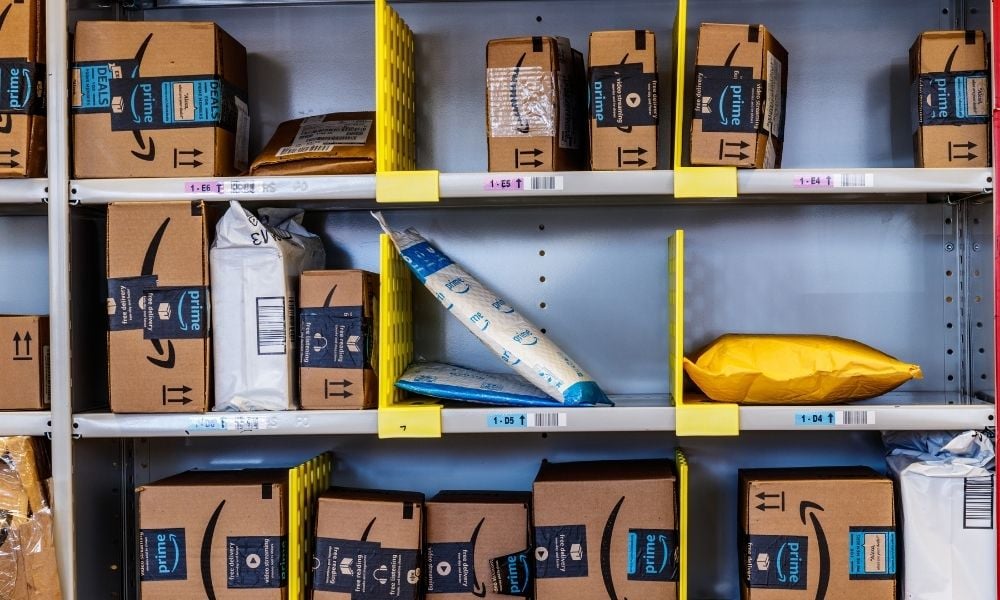Protests planned worldwide highlight continuing unhappiness of massive workforce

Heading into the busiest — if not the most wonderful — time of the year, Amazon could be in a spot of trouble.
That’s because rallies and strikes are being planned worldwide to protest the company’s work practices — and they’re planned for Black Friday, Nov. 26, when many North American retailers offer discounted prices ahead of the holiday season.
Looking to “Make Amazon Pay,” a “global coalition” of workers, unions and activities are encouraging people to demand that the retailer pay fair wages, pay its due of taxes and do better to protect the environment.
“The pandemic has exposed how Amazon places profits ahead of workers, society and our planet. Amazon takes too much and gives back too little. It is time to Make Amazon Pay,” says a letter by the organizers.
The long list of demands includes: raising workers’ pay in warehouses, including hazard pay and premium pay for peak times; negotiating adequate break times; and extending paid sick leave to all workers.
Also wanted? “Suspending the harsh productivity and surveillance regime Amazon has used to squeeze workers, which violates their rights and jeopardizes their safety.”
The group is also calling for greater job security, such as ending “bogus” contractor status and reinstating workers who speak up with concerns about the workplace. They also want Amazon to stop union busting and respect workers’ right to organize, and to give unions greater access to the worksites.
The Canadian Centre for Policy Alternatives, Greenpeace and Oxfam are among the organizations signalling their support for the movement.
In an effort to attract more workers, Amazon Canada held an inaugural career day Sept. 15. The company also announced it would be hiring 15,000 employees in various roles in corporate, technology and fulfillment centres.
Complaints for years
Amazon is, of course, a formidable multinational company. Its revenue in 2020 was US$453 billion. It has 1.5 million employees.
And while offering convenient delivery for millions of customers worldwide — with businesses that include music, market data and streaming services — its track record with the workforce is less than stellar. Complaints have plagued the employer for years.
Tens of thousands of workers have been injured at Amazon facilities for years, and the numbers grew from 2017 to 2020, according to a report from the Strategic Organizing Center (SOC).
Wikipedia devotes nearly 1,500 words covering “working conditions” at Amazon, providing links to many stories of poor, stressful warehouse and delivery requirements, questionable anti-unionization efforts, a “bruising” workplace culture, low wages, health and safety concerns and intrusive surveillance.
This less-than-stellar reputation was not helped when CEO Jeff Bezos blasted off into “space” in July and thanked “every Amazon employee and every Amazon customer, because you guys paid for all this.”
Amazon was also under fire this past summer when it was reported the company was using email or app notifications to dismiss staff.
Pushing for change
While it’s true that worker protests against Amazon have been planned before, this push for Black Friday could take the dissatisfaction to a whole new level.
If this protest proves as widespread as organizers hope, it’ll be hard for the general public to ignore the groundswell of unease coming from Amazon workers. And that might lead to a dent in the company’s sales as customers step back from their Amazon orders and try to shop local instead.
Sadly, worker discontentment doesn’t always lead to change with employers — especially one as large as Amazon where there’s always a job candidate available around the corner. But even a slight dip in revenue dollars might push the retail behemoth to bring in changes or at least cease with its more intrusive policies.
Encouragingly, Amazon recently announced it is trying out a couple of scenarios for its post-pandemic work arrangements in Canada.
What remains to be seen is whether the company has true intentions to improve working conditions, or if a focus on the bottom line and customer service will continue to dominate.




